Thanks to everyone who submitted their amazing Big Idea photos. View the Flickr feed here. Keep your Columbia snaps coming—send them to
[email protected] and look for them in future issues.
Author Archives: Kathleen O'Donnell
Our First Photo of the Month
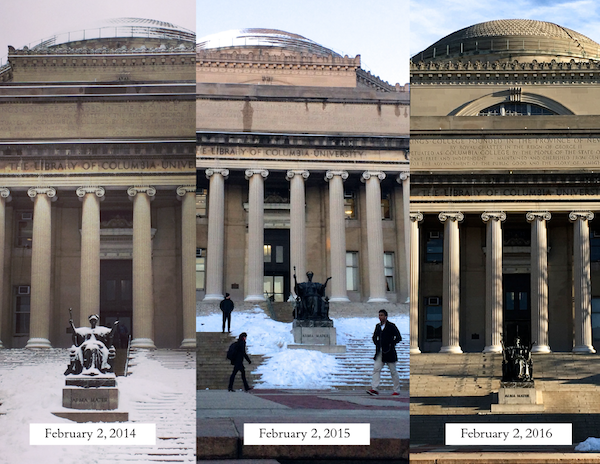 Lin Lan, associate director for CAA marketing and digital initiatives
Lin Lan, associate director for CAA marketing and digital initiatives
Big Idea: Climate Change
Why I chose this photo: “I’ve been at the CAA for nearly three years, and I take a lot of photos of campus for the CAA’s social media accounts. When I was looking through my photos to submit for this contest, I realized that I took nearly identical photos of campus on the same date (ironically, on Groundhog Day) for the past three years—with one glaring difference in each progressive photo—lack of snow.
I know that a specific date in time doesn’t necessarily present definitive evidence of climate change, but there is no doubt that our world is warming. 2015 was the warmest year on record, surpassing the previous record set the year before in 2014, and 2016 is shaping up to be even hotter. I’m tremendously glad and grateful that Columbia is taking a stand on issues of climate change, understanding its risks and threats, and forging the path for a sustainable planet.”
View the Flickr feed here.
Columbia Trustees Go (Even More) Global
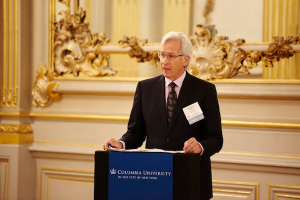 University Trustees gathered at Columbia Global Centers | Paris in early March for a retreat focused on Columbia’s current and future global engagement. This was the first board meeting President Lee Bollinger and the Trustees ever held outside the US. (At left: Chair Jonathan Schiller ’69CC, ’73LAW).
University Trustees gathered at Columbia Global Centers | Paris in early March for a retreat focused on Columbia’s current and future global engagement. This was the first board meeting President Lee Bollinger and the Trustees ever held outside the US. (At left: Chair Jonathan Schiller ’69CC, ’73LAW).
Trustees and faculty discussed existing and proposed global initiatives. Global Center sessions focused on how the student and faculty experience is being enhanced, including access to transformative research opportunities.
In one session, Jordanian teachers spoke eloquently about a Columbia Global Centers | Amman program which provides opportunities for Teachers College faculty members and teachers from an independent Jordanian institute to connect through ongoing workshops designed to improve skills across the region in science, English, math, leadership, and environmental studies.
On March 4, President Lee C. Bollinger, Trustees Chair Jonathan Schiller, and Trustee Claire Shipman ’86CC, ’94IA shared news about Global Columbia with more than 135 alumni, donors, and friends at the Musée d’Orsay.
“This was a chance for our Trustees to get a deeper understanding of the great progress we are making in the global arena; it also provided a rare opportunity for our donors, alumni leaders, and friends in Europe to hear firsthand from our President and Trustees about these exciting developments,” said Amelia J. Alverson, executive vice president for University development and alumni relations.
Goal Setting—How it Happens
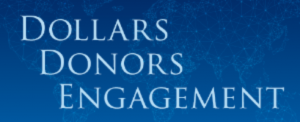 Have you ever wondered how Columbia comes up with these huge, inspirational goals for our campaigns?
Have you ever wondered how Columbia comes up with these huge, inspirational goals for our campaigns?
Well, the answer to that is happening right now, all over our campuses.
Chief development officers from all of Columbia’s schools and units are building draft goals that reflect the key priorities established by deans and faculty. They are working with senior fundraisers, led by Amelia, to link those priorities to goals for our three high level measures of success: dollars, donors, and engaged alumni. And they are thinking about the ways in which those priorities tie in to our University-wide big ideas.
Over the course of the next two months, the senior leadership team, the Provost’s Office, and the chief development officers will be adding and cross-checking and refining these ideas and priorities until we have a set of goals that work at the school and unit level, and the University level.
At that point, the draft goals will be shared with the campaign executive committee and eventually with the Trustees. And that’s how we build our way, step by step, to the big goals that will inspire donors, faculty and staff.
Big Idea Spotlight: The Zuckerman Institute and the Future of Neuroscience
Every day, Columbia scientists at the Mortimer B. Zuckerman Mind Brain Behavior Institute are making discoveries about the essential workings of the brain that will benefit people and societies everywhere.
“We’ve assembled a group of world-class scientists—engineers, statisticians, psychologists, and neurobiologists—each driven by the need to unlock the complexities of the brain and transform our understanding of mind,” said co-director Thomas M. Jessell, PhD, in Circuit, the Institute’s new digital newsletter.
Check out the Latest Discoveries from the Zuckerman Institute
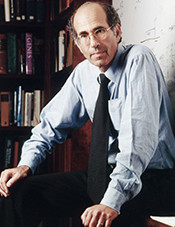 Scents and Sensibility:
Scents and Sensibility:
Representations of the Olfactory World in the Brain
Nobel Laureate Dr. Richard Axel, MD
Zuckerman Institute Co-Director
Discover how the brain knows what the nose is smelling. Watch the lecture.
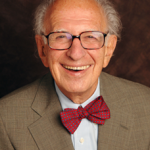
How the Brain Maintains Long-term Memories
Nobel Laureate Dr. Eric Kandel, MD
Zuckerman Institute Co-Director
New research shows more evidence of a system in the brain that maintains memories for a long period of time. Watch the video.
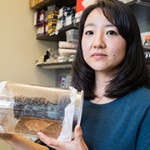
The Symphony of Signals that Guide Brain Development
Minoree Kohwi, PhD
How does a brain become a brain? Find out.
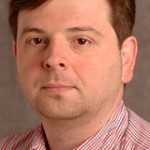 Newborn Brain Cells Required for Memory
Newborn Brain Cells Required for Memory
Attila Losonczy, MD, PhD
The study of the activity of newly generated brain cells in awake mice reveals they play a critical role in forming memories. Watch the video.

What Songbirds Can Teach Us About Language
Sarah Woolley, PhD
Learn how the brain decodes sound.
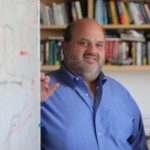
The Ties that Bind: Brain Cells Link Emotion with the Sensory World
Daniel Salzman, MD, PhD
Discover how the brain responds emotionally to the stimuli that bombard us.
What’s Next? A New Home on a New Campus
The Zuckerman Institute will soon move into the Jerome L. Greene Science Center, the first building to open on Columbia’s Manhattanville campus.
![]()
Keep up with the scientists at the Zuckerman Institute
Read Circuit, and follow the discoveries as they happen on Facebook and Twitter
Big Idea Event: How Our Brains Remember the Past and Shape Our Future
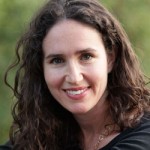 Psychologist Daphna Shohamy of the Zuckerman Institute will explore how different parts of the brain work together to support learning and what this means for building memories and making decisions.
Psychologist Daphna Shohamy of the Zuckerman Institute will explore how different parts of the brain work together to support learning and what this means for building memories and making decisions.
April 6 6:30 p.m. | Columbia School of Journalism Lecture Hall
For more events, see Jerry’s Picks.
A $13 Million Gift Establishes Burke Professorship and Center for Japanese Art History at Columbia
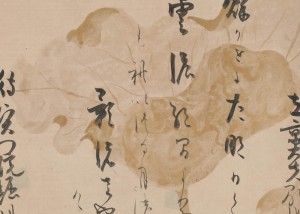 In February, Columbia University announced a $13 million gift from the Mary Livingston Griggs and Mary Griggs Burke Foundation that will establish the Mary Griggs Burke Center for Japanese Art and the Mary Griggs Burke Professorship of East Asian Buddhist Art History in the department of art history and archaeology. The gift will also fund renovations that will create space for the Center. The professorship will ensure teaching and research at the highest level in the field of East Asian art. Columbia’s three existing chairs in Asian Art are endowed positions; the Burke Professorship will be the fourth named chair.
In February, Columbia University announced a $13 million gift from the Mary Livingston Griggs and Mary Griggs Burke Foundation that will establish the Mary Griggs Burke Center for Japanese Art and the Mary Griggs Burke Professorship of East Asian Buddhist Art History in the department of art history and archaeology. The gift will also fund renovations that will create space for the Center. The professorship will ensure teaching and research at the highest level in the field of East Asian art. Columbia’s three existing chairs in Asian Art are endowed positions; the Burke Professorship will be the fourth named chair.
“With this significant gift, Columbia’s recognized leadership in the field of East Asian Art will grow even stronger,” said Columbia University President Lee C. Bollinger. “I join many others, I know, in looking forward to the learning and new discoveries to be produced as a result and to the creative academic partnerships that will come to life because of the Mary Griggs Burke Center.”
Building on Columbia’s long history of scholarship and leadership in the fields of Japanese art, culture and language, the Burke Center will advance the understanding of the art and culture of Japan by supporting continued inquiry into relevant issues. The foundation’s gift will fund the center’s programs in perpetuity and will allow for graduate and dissertation fellowships, predoctoral research grants, publication subsidies, conferences and symposia, and postdoctoral global core fellowships in Japanese art or other East Asian art fields.
 Matthew P. McKelway, the Takeo and Itsuko Atsumi Professor of Japanese Art History and an expert in the history of Japanese painting will serve as its director. “Mrs. Burke had a few major passions, Japanese art being, perhaps, the most important and long-lasting,” said McKelway. “By the time I first met her, in 1990 when I was a graduate student in art history at Columbia, she already possessed the greatest private collection of Japanese art in the world. Her legacy has been one of tremendous impact and consequence for the study of Japanese art history at the University. She was steadfast in her support of scholarly research and teaching in the field.” Mrs. Burke (née Mary Livingston Griggs) grew up in St. Paul, Minnesota. She spent her entire adult life in New York City, earned her MA at Columbia in 1943 and died in 2012.
Matthew P. McKelway, the Takeo and Itsuko Atsumi Professor of Japanese Art History and an expert in the history of Japanese painting will serve as its director. “Mrs. Burke had a few major passions, Japanese art being, perhaps, the most important and long-lasting,” said McKelway. “By the time I first met her, in 1990 when I was a graduate student in art history at Columbia, she already possessed the greatest private collection of Japanese art in the world. Her legacy has been one of tremendous impact and consequence for the study of Japanese art history at the University. She was steadfast in her support of scholarly research and teaching in the field.” Mrs. Burke (née Mary Livingston Griggs) grew up in St. Paul, Minnesota. She spent her entire adult life in New York City, earned her MA at Columbia in 1943 and died in 2012.
The Center will also advance the legacy of Takeo and Itsuko Atsumi Professor Emerita Miyeko Murase, who earned her PhD from Columbia in 1962 and taught at the University for over 30 years. Dr. Murase specializes in the history of Japanese painting and was instrumental in guiding the formation of Mrs. Burke’s collection. She has written extensively about Japanese art and curated many major exhibitions, including “Emaki: Narrative Scrolls from Japan” (Asia Society, 1983) and three shows at the Metropolitan Museum of Art—“Japanese Art: Selections from the Mary and Jackson Burke Collection” (1975), “Bridge of Dreams: The Mary Griggs Burke Collection of Japanese Art” (2000) and “Turning Point: Oribe and the Arts of Sixteenth-Century Japan” (2003).
At Columbia, Mrs. Burke supported generations of graduate students in their study of Japanese and East Asian art. She sponsored annual weekend visits to her Long Island home where students could examine her collection closely, as well as trips to view exhibitions of Japanese art nationwide and research opportunities in Japan. Many of these students have assumed leadership positions in the field at noted US institutions.
On March 13, an event hosted by the Japanese Art Dealers Association (JADA) celebrating the establishment of the Burke Center was held in New York City, purposefully coinciding with Asia Week. Attendees included Dean David Madigan, Executive Vice President for Arts and Sciences and Dean of the Faculty of Arts and Sciences; Professor McKelway; Professor Emerita Murase; Trustees of the Burke Foundation; significant donors to the Miyeko Murase Travel Fund for Japanese Art; and other close colleagues and friends of Mrs. Burke and Japanese art.
“I see the Burke Center as having a ripple effect,” said Dean Madigan, “accelerating scholarship and collaboration among our faculty, reaching students at the graduate and undergraduate level, and touching the broader culture. This [Center] embodies my hope for Columbia: that conversations started here will expand outward, generating new knowledge and interest.”
Gift Highlight
The Secret to Increased Annual Giving: Planned Gifts
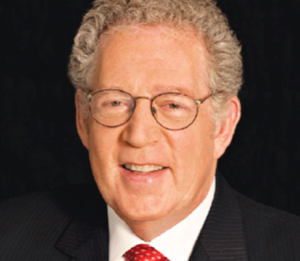 Studies show that loyal annual fund donors are the best candidates for planned gifts.
Studies show that loyal annual fund donors are the best candidates for planned gifts.
But did you know that planned gifts can also inspire increased annual giving? Studies have also found that donors who had made a bequest increased their annual giving, specifically in the years before and immediately following adding the charity to their will.
Case in point: Michael Garrett ’66CC, ’69LAW, ’70BUS and friend of the Columbia Libraries who has been making gifts to support annual funds across the University since 1968.
- He is a loyal donor to many parts of Columbia including: the Business School Fund, Law School Annual Fund, General Support for the Libraries, just to name a few.
- In 2011, he established a $25,000 charitable gift annuity where
the remainder will be split between the College, Law School, and the
Rare Book & Manuscript Library. - In 2012, he documented his bequest intention to support the many parts of Columbia he cares about, which included: the Business School ($15,000 -unrestricted), Law School Annual Fund ($25,000), General Support for the Libraries ($25,000), and College Annual Fund ($35,000).
- In 2015, he increased his giving to the College Annual Fund.
Building the Donor Pipeline
CAA at 10: Looking Back and Moving Forward
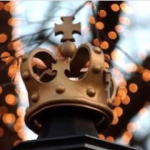 CAA is only a decade old, but has already accomplished so much. Find out what’s next from Donna MacPhee ’89CC, vice president for Columbia Alumni Relations and president of the CAA. Engaging More Alumni
CAA is only a decade old, but has already accomplished so much. Find out what’s next from Donna MacPhee ’89CC, vice president for Columbia Alumni Relations and president of the CAA. Engaging More Alumni

